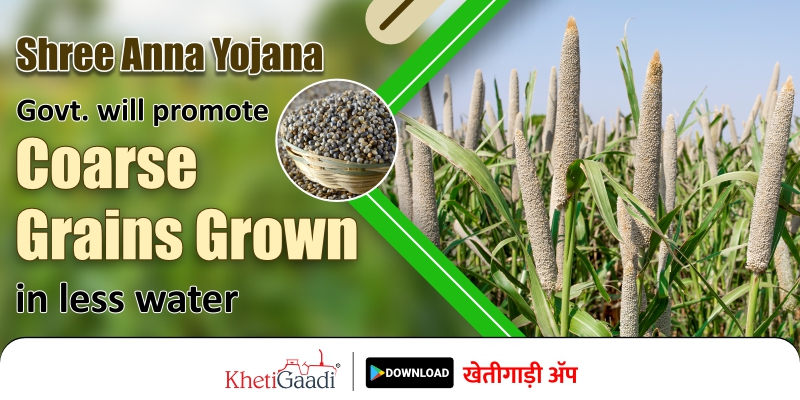To promote the cultivation and production of coarse grains in the country, the Central Government has announced the launch of Shree Anna Yojana. Under this scheme of the government, the area and production of coarse grains will be increased in the country. The central government is preparing to make our country a global hub of food grains. For this, the Indian Millet Research Institute at Hyderabad will be made a major millet research centre.
KhetiGaadi always provides right tractor information
The specialty of the grains under Shree Anna Yojana is that its crops require very less water. The Finance Minister said that at present India is the largest producer and exporter of Bajra. A millet plant requires only 350 mm of water during its crop cycle. Apart from this, if the crop of coarse grains gets damaged due to any reason, then it becomes useful for animal fodder. Farmer brothers, through this post of Tractor Guru, today we will share with you all the information related to Shree Anna Yojana.
In India, Rajasthan, Maharashtra, Karnataka, Gujarat and Madhya Pradesh are the most cultivated millets. Apart from this, coarse cereals are also cultivated in Uttar Pradesh, Bihar, Jharkhand, West Bengal and Orissa.
Coarse grains i.e. millets will henceforth be known as Shrianna. Coarse grains are also called Devanna and are also considered the best grains. Over time, most people shifted to wheat and rice cultivation, while India has been producing a variety of cereals such as bajra, jowar, ragi, kuttu, sama, china and ramdana since ancient times, which have been cultivated for centuries. Since ancient times, cereals have been an integral part of our diet and these grains are considered very beneficial for health. After the budget, Union Agriculture Minister Narendra Singh Tomar also tweeted that ‘Today millets are becoming popular all over the world and the small farmers of India are getting the maximum benefit from it. Now the Modi government will give a new identity to this ‘super food’ by naming it as ‘Shree Anna’.
While cultivating coarse grains, very less water is needed for their crops to grow well. Compared to other crops, millets can be successfully cultivated even on less watered land or barren land. While cultivating Bajra, only 350 mm of water is needed to prepare the entire crop. Where on one hand the cultivation of other crops is ruined due to lack of water, on the other hand, in the event of failure of the crop of coarse grains, it becomes useful for feeding animals as fodder.
Most of the world’s millets are cultivated in Africa, but the largest production of millets is in India. Talking about exports, Africa is the largest exporter of millet grains, while India is at the second place in its exporting country. India is exporting Jowar, Bajra, Ragi, Kanera and Buckwheat to UAE, Nepal, Saudi Arabia, Libya, Egypt, Oman, Yemen, Tunisia, UK and USA. The list of major producers of millets in the world includes China, Mali, Nigeria, Ethiopia, Sudan, Chad, Pakistan, Burkina Faso, Senegal, Tanzania, Nepal, Russia, Ukraine, Ghana, Uganda, Myanmar and Guinea.
Coarse cereals are cultivated on a large scale in India. India’s estimated share of coarse cereals in the whole world is more than 41 percent. According to an FAO report, in the year 2020, the production of coarse cereals was up to 30.464 million metric tons in the world. Out of this, India alone produced 12.49 MMT.
To know more about tractor price contact to our executive






